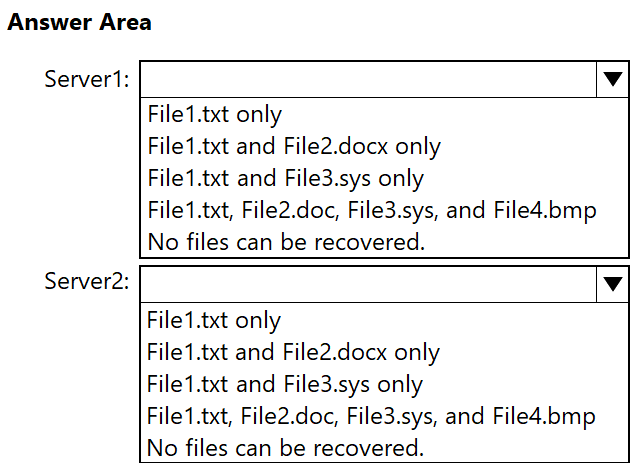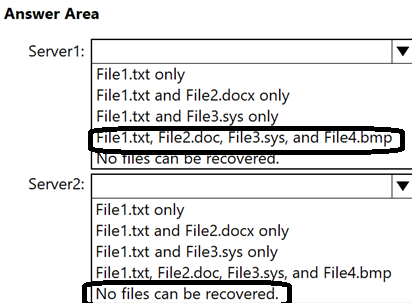i vote answer B
BECAUSE
To identify the PDC emulator, you would need to use Active Directory Users and Computers, but under "Operations Masters" in the PDC tab to see the PDC Emulator.
What should you implement for the deployment of DC3?
b
Create a domain controller named dc3.corp.fabrikam.com in Vnet1.
In a hybrid network, you can configure Azure virtual machines as domain controllers. The domain controllers in Azure communicate with the on-premises domain controllers in the same way that on-premises domain controllers communicate with each other.
Note: This question is part of a series of questions that present the same scenario. Each question in the series contains a unique solution that might meet the stated goals. Some question sets might have more than one correct solution, while others might not have a correct solution.
After you answer a question in this section, you will NOT be able to return to it. As a result, these questions will not appear in the review screen.
Your network contains an Active Directory Domain Services (AD DS) domain named contoso.com.
You need to identify which server is the PDC emulator for the domain.
Solution: From Active Directory Users and Computers, you right-click contoso.com in the console tree, and then select Operations Master.
Does this meet the goal?
b
i vote answer B
BECAUSE
To identify the PDC emulator, you would need to use Active Directory Users and Computers, but under "Operations Masters" in the PDC tab to see the PDC Emulator.
HOTSPOT You need to meet the technical requirements for Server4.
Which cmdlets should you run on Server1 and Server4? To answer, select the appropriate options in the answer area.
NOTE: Each correct selection is worth one point.
Hot Area: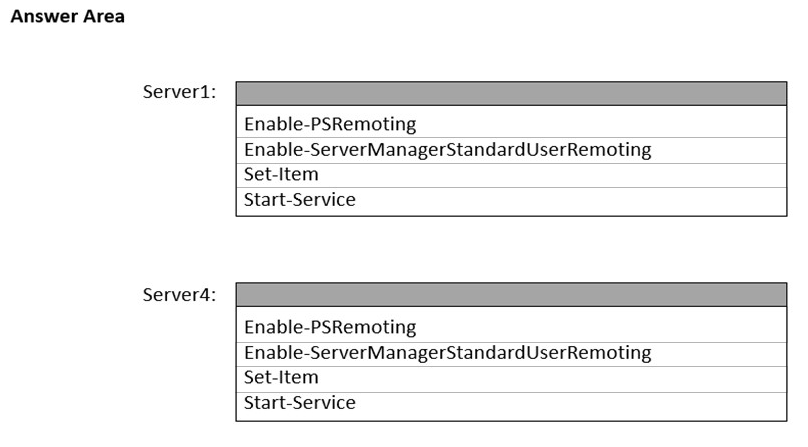
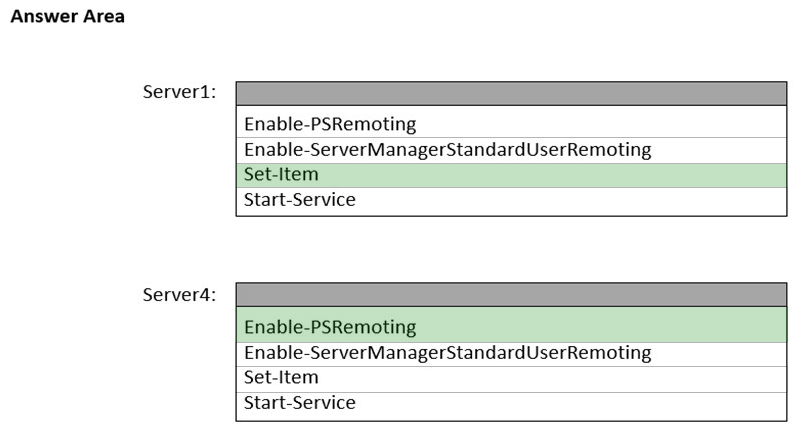
Reference:
https://4sysops.com/wiki/enable-powershell-remoting/
Your network contains an Active Directory Domain Services (AD DS) domain named contoso.com. The domain contains the servers shown in the following table.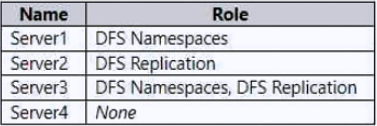
You need to create a Distributed File System (DFS) namespace that will contain the following:
A domain-based namespace named \\contoso.com\Public
A folder named Finance
Which servers can you configure as folder targets for the Finance folder?
c
Your network contains an Active Directory Domain Services (AD DS) forest. The forest contains three domains. Each domain contains 10 domain controllers.
You plan to store a DNS zone in a custom Active Directory partition.
You need to create the Active Directory partition for the zone. The partition must replicate to only four of the domain controllers.
What should you use?
a
B is the correct answer for me because you generally cannot use ntdsutil.exe alone to configure Active Directory (AD) replication directly between specific domain controllers. The ntdsutil tool is primarily intended for maintenance tasks and troubleshooting within AD, such as performing metadata cleanup, managing snapshots, and seizing or transferring FSMO roles. The Microsoft recommended tool used to configure replication between specific domain controllers to specify and control replication paths, schedules and intervals. You can also use the Repadmin command-line tool to manage and monitor replication. With repadmin, you can initiate replication manually (repadmin /sync), view replication status (repadmin /showrepl), and force replication between specific domain controllers. You can also use PowerShell cmdlets (like Get-ADReplicationSiteLink, Set-ADReplicationConnection, etc.) can configure, view, and modify replication settings.
HOTSPOT Your network contains an Active Directory Domain Services (AD DS) domain named adatum.com. The domain contains a file server named Server1 and three users named User1, User2, and User3.
Server1 contains a shared folder named Share1 that has the following configurations: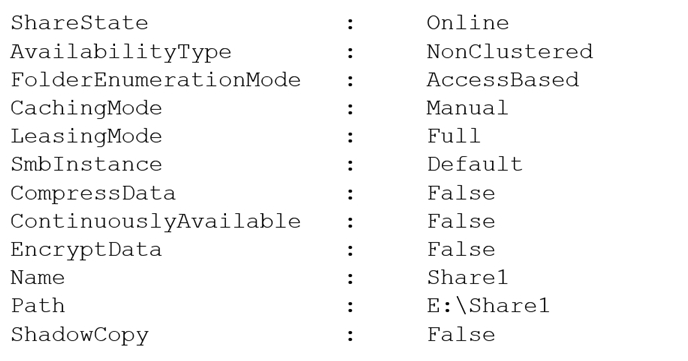
The share permissions for Share1 are configured as shown in the Share Permissions exhibit.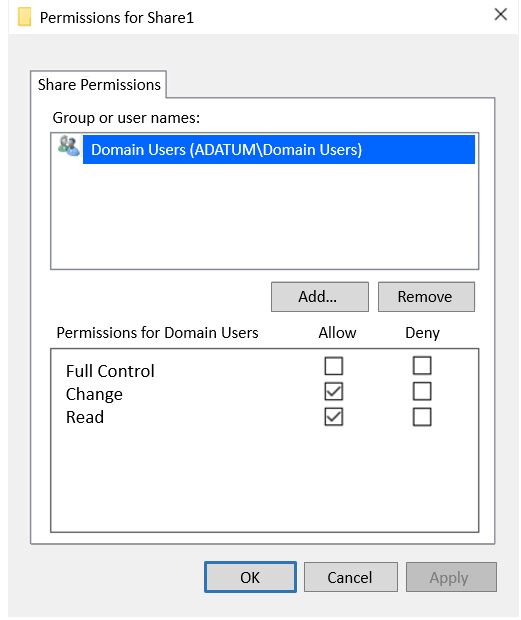
Share1 contains a file named File1.bxt. The advanced security settings for File1.txt are configured as shown in the File Permissions exhibit.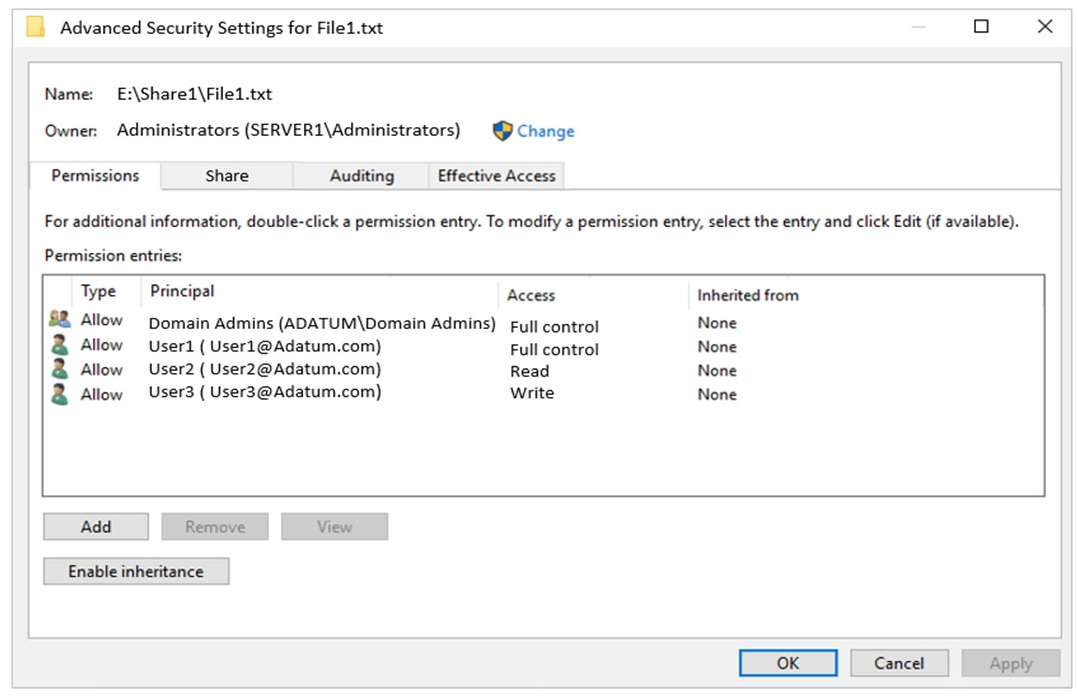
For each of the following statements, select Yes if the statement is true. Otherwise, select No.
NOTE: Each correct selection is worth one point.
Hot Area: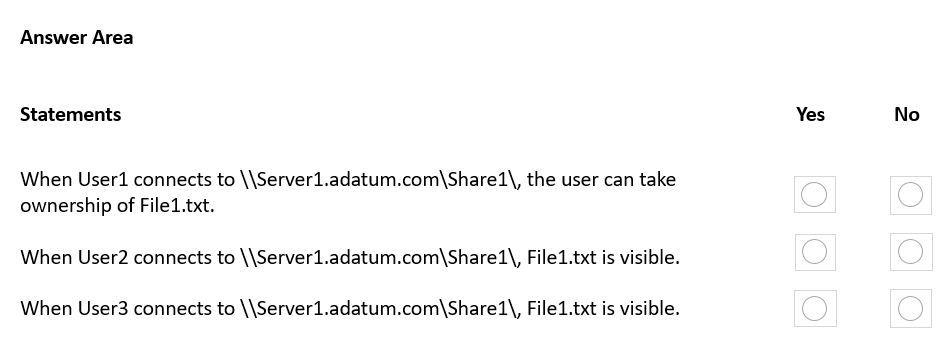
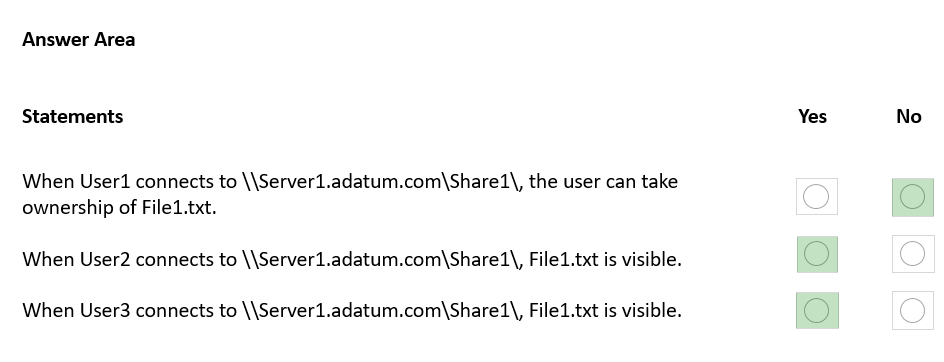
HOTSPOT
You have a Windows Server container host named Server1.
You start the containers on Server1 as shown in the following table.
You need to validate the status of ProcessA and ProcessC.
Where can you verify that ProcessA and ProcessC are in a running state? To answer, select the appropriate options in the answer area.
NOTE: Each correct selection is worth one point.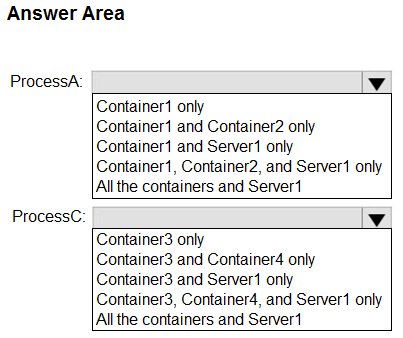
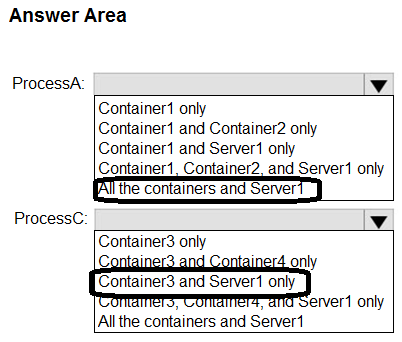
HOTSPOT Your network contains an Active Directory Domain Services (AD DS) domain named contoso.com.
The network contains the servers shown in the following table.
You plan to implement IP Address Management (IPAM).
You need to use the Group Policy based provisioning method for managed servers. The solution must support server discovery.
What should you do? To answer, select the appropriate options in the answer area.
NOTE: Each correct selection is worth one point.
Hot Area: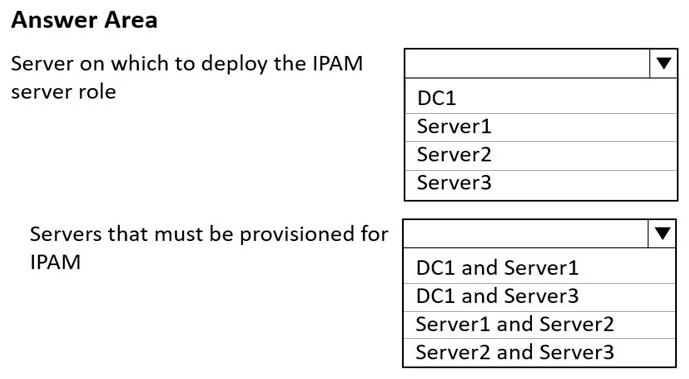
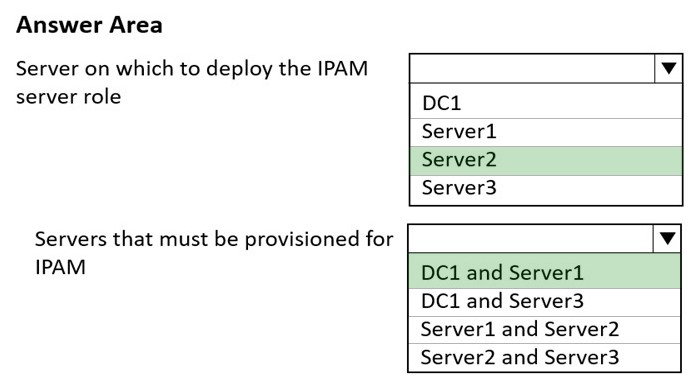
You have an on-premises Active Directory Domain Services (AD DS) domain that syncs with an Azure Active Directory (Azure AD) tenant. The on-premises network is connected to Azure by using a Site-to-Site VPN.
You have the DNS zones shown in the following table.
You need to ensure that names from fabrikam.com can be resolved from the on-premises network.
Which two actions should you perform? Each correct answer presents part of the solution.
NOTE: Each correct selection is worth one point.
be
Reference:
https://docs.microsoft.com/en-us/azure/private-link/private-endpoint-dns#on-premises-workloads-using-a-dns-forwarder
HOTSPOT
You have an Active Directory Domain Services (AD DS) domain that contains the member servers shown in the following table.
Server3 contains a data disk named Disk1 that has Data Deduplication installed. Disk1 contains the files shown in the following table.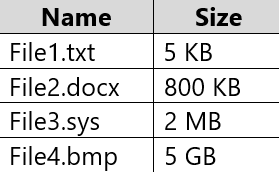
Server3 fails.
You need to recover the files on Disk1.
Which files can you recover if you attach Disk1 to Server1, and which files can you recover if you attach Disk1 to Server2? To answer, select the appropriate options in the answer area.
NOTE: Each correct selection is worth one point.